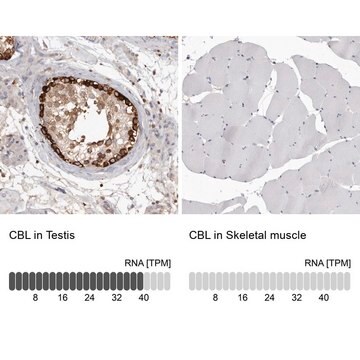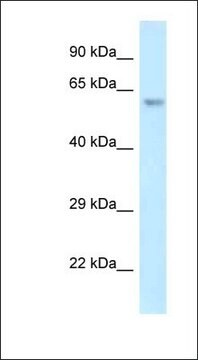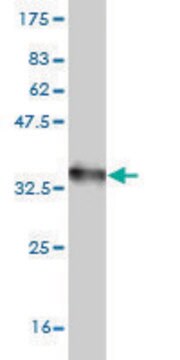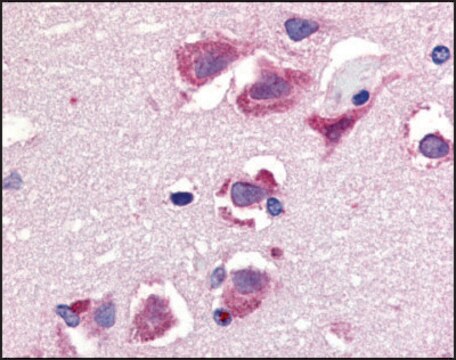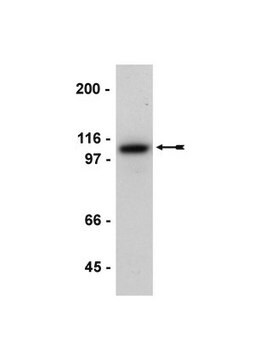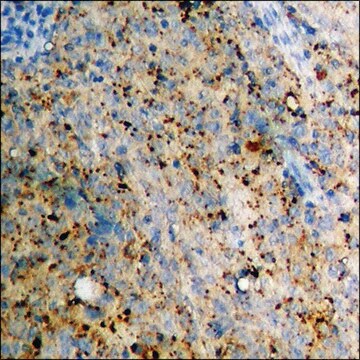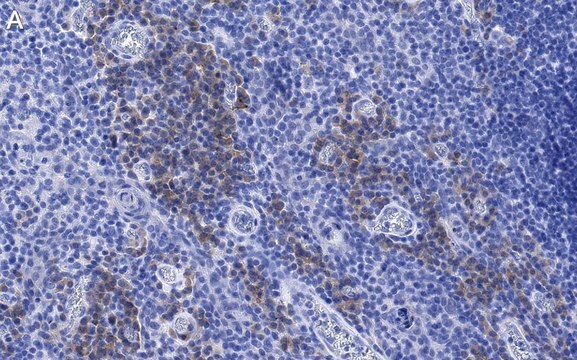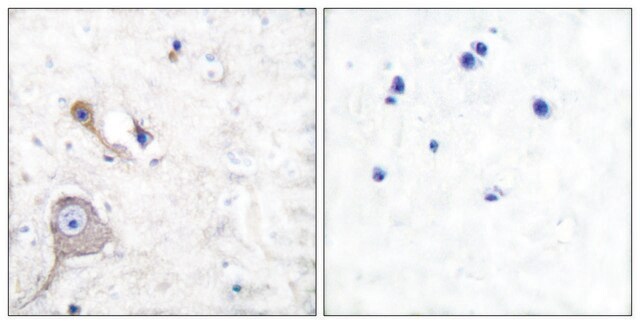MABF981
Anti-CXCR4 Antibody, clone 12G5
clone 12G5, from mouse
Synonym(e):
C-X-C chemokine receptor type 4, CXC-R4, CXCR-4, FB22, HM89, LCR1, Leukocyte-derived seven transmembrane domain receptor, LESTR, Lipopolysaccharide-associated protein 3, LAP-3, LPS-associated protein 3, NPYRL, Stromal cell-derived factor 1 receptor, SDF-
About This Item
Empfohlene Produkte
Biologische Quelle
mouse
Qualitätsniveau
Antikörperform
purified immunoglobulin
Antikörper-Produkttyp
primary antibodies
Klon
12G5, monoclonal
Speziesreaktivität
human
Methode(n)
flow cytometry: suitable
immunocytochemistry: suitable
neutralization: suitable
Isotyp
IgG2aκ
NCBI-Hinterlegungsnummer
UniProt-Hinterlegungsnummer
Versandbedingung
dry ice
Posttranslationale Modifikation Target
unmodified
Angaben zum Gen
human ... CXCR4(7852)
Allgemeine Beschreibung
Immunogen
Anwendung
Entzündung & Immunologie
Immunoglobuline & Immunologie
Immunocytochemistry Analysis: A representative lot stained paraformaldehyde-fixed CHO cells transfected to stably express human CXCR4/fusin (Endres, M.J., et al. (1996). Cell. 87(4):745-756).
Neutralizing Analysis: A representative lot blocked SDF-1-induced lymphocyte chemotaxis using freshly isolated human PBMCs (Bleul, C.C., et al. (1997). Proc. Natl. Acad. Sci. U S A.94(5):1925-1930).
Neutralizing Analysis: A representative lot blocked the infection of CXCR4+/CD4+ rhabdomyosarcoma (RD) cells by seven HIV-1 (LAI, RF, Gun-1wt, Gun-1var) and HIV-2 (ROD A/B and CBL-23) strains as assessed by >95% reduced syncytium (multinucleated cell) formation due to viral infection-induced cell-to-cell fusion. Clone 12G5 also blocked Gun-1wt, Gun-1var, and CBL-23, but not the other 4 HIV strains from infecting HeLa/CD4 and C8166 cultures (McKnight, A., et al. (1997). J. Virol. 71(2):1692-1696).
Neutralizing Analysis: A representative lot blocked HIV-2 /vcp strain from infecting U87 cells transfected to express human CXCR4/fusin as assessed a reduction of syncytium (multinucleated cell) formation due to viral infection-induced cell-to-cell fusion (Endres, M.J., et al. (1996). Cell. 87(4):745-756).
Note: Although clone 12G5 binds cell surface CXCR4, efforts to immunoprecipitate or immunoblot CXCR4 were reported to be unsuccessful (Endres, M.J., et al. (1996). Cell. 87(4):745-756).
Qualität
Flow Cytometry Analysis: 1.0 µg of this antibody detected CXCR4 in Jurkat cells.
Zielbeschreibung
Physikalische Form
Lagerung und Haltbarkeit
Handling Recommendations: Upon receipt and prior to removing the cap, centrifuge the vial and gently mix the solution. Aliquot into microcentrifuge tubes and store at -20°C. Avoid repeated freeze/thaw cycles, which may damage IgG and affect product performance.
Sonstige Hinweise
Haftungsausschluss
Sie haben nicht das passende Produkt gefunden?
Probieren Sie unser Produkt-Auswahlhilfe. aus.
Empfehlung
Lagerklassenschlüssel
12 - Non Combustible Liquids
WGK
WGK 2
Flammpunkt (°F)
Not applicable
Flammpunkt (°C)
Not applicable
Analysenzertifikate (COA)
Suchen Sie nach Analysenzertifikate (COA), indem Sie die Lot-/Chargennummer des Produkts eingeben. Lot- und Chargennummern sind auf dem Produktetikett hinter den Wörtern ‘Lot’ oder ‘Batch’ (Lot oder Charge) zu finden.
Besitzen Sie dieses Produkt bereits?
In der Dokumentenbibliothek finden Sie die Dokumentation zu den Produkten, die Sie kürzlich erworben haben.
Unser Team von Wissenschaftlern verfügt über Erfahrung in allen Forschungsbereichen einschließlich Life Science, Materialwissenschaften, chemischer Synthese, Chromatographie, Analytik und vielen mehr..
Setzen Sie sich mit dem technischen Dienst in Verbindung.